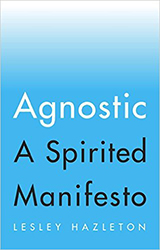The movie to watch tomorrow after Obama’s speech: James Longley’s documentary Iraq in Fragments, more timely than ever and yet timeless.
I saw it when it first came out in 2006, but maybe I was too focused then on the ‘now-ness’ of documentaries, or I was blinded by my own imagined ‘expertise’ on Iraq as I worked on After the Prophet. I remember thinking it a good movie, but somehow it didn’t imprint itself on my over-researched brain.
But now the President’s about to declare an end to the American combat mission in Iraq – and to do it even as the violence ramps up again, despite strangely other-worldly assurances from D.C. that it‘s lessened. Now everyone’s breathing easier because we’re “getting out” of Iraq (we aren’t, of course — we’re just rebranding some combat troops as support-and-assist troops, adding a huge number of Blackwater/Xe-type mercenaries paid by the State Department instead of the Pentagon (as though that will make all the difference), and moving other combat units out of the Iraqi frying pan into the Afghanistan fire). So it seemed a good time to rent the DVD of Longley’s movie and take a second look.
And this time it both took my breath away and just about broke my heart.
Where was my head in 2006? How was I not haunted as I now am by the fear and desperate hope in the eyes of Muhammad, the eleven-year-old Sunni boy living a Dickensian working life in a filthy auto-parts repair shop in Baghdad as American helicopters thunder overhead?
How did the pleas of the blindfolded and beaten men accused by Muqtada al-Sadr’s fired-up Shia followers of selling alcohol in the southern city of Nasariya not echo in my ears?
How did I blank out the elderly father dreaming of an independent Kurdistan in a small village in the north, even as his son surrenders his dreams of medical school for work at the local brick oven, shown belching huge plumes of oily smoke into a Ken-Burns-gorgeous sunset?
These are the real lives and dreams affected by America’s war in Iraq, though there’s no attempt to push that point in the three parts of this movie. In fact there’s no omniscient narrator at all. The only voice-over narration is that of the Iraqis Longley follows with his camera, and they speak about themselves from a place deep inside. They let him in, trusting him to not to judge, and he doesn’t. Instead, he makes their stories both utterly of the place and yet universal.
‘Iraq in Fragments’ has been called – rightly – a documentary masterpiece (acknowledged by, among others, Sundance awards for directing, cinematography, and editing, and a nomination for best documentary at the Oscars, where the young Muhammad lost out to Al Gore and An Inconvenient Truth). But its power is all the greater by contrast with the best-known “Iraq war movie” – best-picture Oscar winner The Hurt Locker, which presented itself as a fictionalized documentary.
Trouble is, ‘The Hurt Locker’ wasn’t really about Iraq. It was yet another in the long series of American movies where “the meaning of war” is seen entirely through American eyes. Iraq was all but incidental to ‘The Hurt Locker,’ as were Iraqis. The place and the people were merely a stage on which Americans played their drama. ‘Iraq in Fragments,’ by contrast, takes you behind the stage, and quietly and devastatingly shows the effect on those who were merely ‘The Hurt Locker’s’ scenery.
So by all means watch the President’s speech tomorrow, but then be a mensch, and watch this movie.
———————————————————
By way of a coda to both Obama’s speech and ‘Iraq in Fragments,’ you could do worse than consider what General Ray Odierno, the departing commander of American forces in Iraq, said in the NYT today:
“We came in very naïve about what the problems were in Iraq; I don’t think we understood what I call the societal devastation that occurred,” he said, citing the Iran-Iraq war, the Persian Gulf war and the international sanctions from 1990 to 2003 that wiped out the middle class. “And then we attacked to overthrow the government,” he said.
The same went for the country’s ethnic and sectarian divisions, he said: “We just didn’t understand it.”
To advocates of the counterinsurgency strategy that General Odierno has, in part, come to symbolize, the learning curve might highlight the military’s adaptiveness. Critics of a conflict that killed an estimated 100,000 Iraqis, perhaps far more, and more than 4,400 American soldiers might see the acknowledgment as evidence of the war’s folly.
Asked if the United States had made the country’s divisions worse, General Odierno said, “I don’t know.”
“There’s all these issues that we didn’t understand and that we had to work our way through,” he said. “And did maybe that cause it to get worse? Maybe.”





Lesley,
There was a good interview about Iraq on Weekday this morning. http://kuow.org/program.php?id=21217. The first speaker was very good at explaining how inside Iraq the voices were (and are) multiplex. And the LRB had a scary piece about the sanctions recently, the link for which I could dig up.
Thanks for the KUOW link, Robert — and yes, if you find that London Review of Books piece on sanctions, could you post the link as another comment? Thanks again — L.